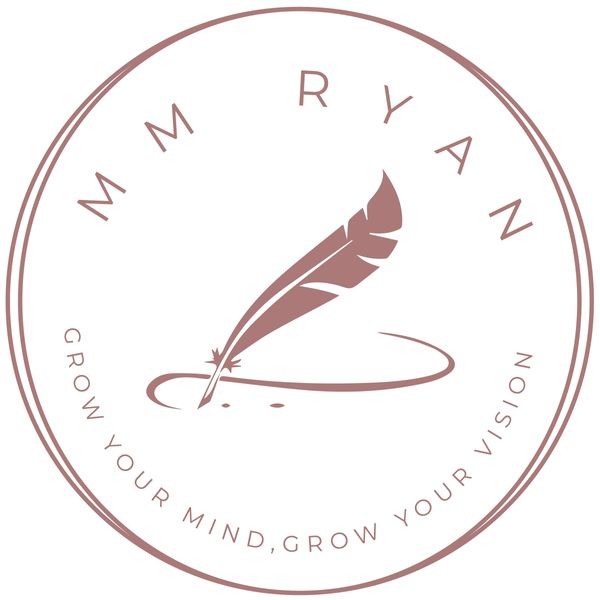
See it Then Seize it!!
7 Ways Visualization can help your writing.
Published by MM Ryan 5/31/2023
I’m a visual writer. Words don’t come to me; I write through the vehicle of my imagination. I see scenes and allow situations to play out on the screen of my mind and do my best to describe them.
When I’m stuck on what I want to write next, my go-to fix is to stop writing and examine the scene in my mind and start describing it. Where are my characters at that moment? What time of day is it? What room or location are they in? Who is there with them? What are their plans for that day or night?

Capturing this detail is enough to give me a trail to follow and adds richness, and reality to my work. It helps me decide if it’s time to introduce a new minor character in the scene: maybe an upstairs neighbor with a noisy washing machine, someone who has left a pile of trash in my front yard, or someone’s bad kids…. or rude husband…. or, or, or….

None of this may make it to the final product, but it will help me write my way to my next plot point without forcing it.
Visualization can be a powerful tool as it can enhance creativity, clarity of thought, and overall writing process. Here are some ways in which visualization can assist you:
1. Developing ideas: Visualization can help writers generate and develop ideas for their stories or essays. By mentally picturing scenes, characters, or settings, you can explore different possibilities and create more vivid and engaging narratives.
2. Creating detailed descriptions: Visualization enables writers to imagine and describe their settings, characters, and events in greater detail. By visualizing the scene in their minds, you can capture specific sensory details, such as sights, sounds, smells, and textures, resulting in more immersive and realistic writing.
3. Improving story structure: Writers can use visualization to map out the structure of their stories, such as plot progression, character arcs, and key events. Visualizing the flow of the narrative can help you identify any inconsistencies, plot holes, or areas that require further development.
4. Overcoming writer's block: Visualization techniques, such as guided imagery or mental exercises, can help overcome writer's block. By closing your eyes and visualizing your story, you can tap into your subconscious and unleash creativity, finding new ideas and breaking through mental barriers.
5. Enhancing character development: Visualization can aid in creating well-rounded and relatable characters. You can imagine a characters' physical appearance, mannerisms, and personalities, helping to better understand their motivations, desires, and conflicts. This deeper understanding can result in more authentic and compelling character portrayals.
6. Setting the writing mood: Before starting to write, visualize the desired writing environment or atmosphere to help get into the right mindset. You can picture a calm, inspiring space, surrounded by objects or elements that evoke the mood you want to convey in your writing.
7. Editing and revision: Visualization can also be helpful during the editing and revision process. Try to visualize your work as a reader would, identifying areas where the writing may be unclear, repetitive, or lacking in impact. By stepping back and visualizing the overall structure and flow of their work, you can make more informed decisions about what changes or improvements are needed.
Remember, visualization is a personal and subjective process, and what works for one writer may not work for another. It's important to experiment with different visualization techniques and find what works for you!!
Happy Writing!!
